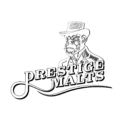Introduction:
The Black Velvet distillery produces more than just Whiskey, but their main focus is on Black Velvet Whiskey. The core range includes two classic Blends: Black Velvet Whiskey (assumed to be three years old) and Black Velvet Reserve (8 years old). These Blends have a smooth and fruity character with spicy notes, caramel, butter, and nutty flavors. The unique aroma comes from a combination of corn and rye grains used in the Whiskey. Unlike other Blends, the spirit is not blended after maturation but during the distillation process.
Recently, the distillery has introduced new flavored additions such as Black Velvet Toasted Caramel and Black Velvet Cinnamon Rush Flavored Whiskey, which have been very successful in the US market.
The Production:
The Black Velvet Distillery is a highly modern and fully automated facility with a large production capacity. The automation was implemented in 1991 and allows for efficient production. Every week, the distillery receives eight to ten rail carloads of corn, emphasizing its high output.
The production process at Black Velvet Distillery begins with grains and goes through maturation in barrels stored on – site. For the Canadian market, the Whiskey is bottled directly at the distillery. However, the majority, approximately 85%, is shipped to California and Kentucky for bottling, mainly to cater to the US market.
Black Velvet is extremely popular in the US and holds the title of the second bestselling Canadian Whiskey in the country, surpassed only by Crown Royal. Each year, close to 100 tanker carloads, each equivalent to 100,000 liters, are shipped to meet the high demand in the US market.
The History:
Originally known as “Black Label”, the brand’s name was changed to Black Velvet in the late 1940s by Master Distiller Jack Napier. Despite the name change, the focus shifted to emphasize the taste of the whiskey. Napier also introduced a new blending method in 1951, where blending occurred during distillation, rather than after maturation, making Black Velvet Whiskey unique.
At that time, Black Velvet was produced in Quebec under the ownership of Schenley Industries. The brand was later sold to Grand Metropolitan in 1987, then to Diageo in 1997, and eventually to Constellation Brands (then known as Canandaigua Brands) in 1999.
The distillery in Lethbridge was established in 1973. In 2009, Constellation Brands decided to consolidate all its whiskey production and renamed the former Palliser Distillery to Black Velvet Distillery.
Visitor Center:
There’s no visitor center at the Black Velvet Distillery and no tours are offered.
Information about the Distillery: |
|
| Number of bottles: | 0 Bottles |
| Country, Region: | Canada |
| Coordinates: | -112.794917 49.713598 |
| Status: | Active |
Introduction:
The Black Velvet distillery produces more than just Whiskey, but their main focus is on Black Velvet Whiskey. The core range includes two classic Blends: Black Velvet Whiskey (assumed to be three years old) and Black Velvet Reserve (8 years old). These Blends have a smooth and fruity character with spicy notes, caramel, butter, and nutty flavors. The unique aroma comes from a combination of corn and rye grains used in the Whiskey. Unlike other Blends, the spirit is not blended after maturation but during the distillation process.
Recently, the distillery has introduced new flavored additions such as Black Velvet Toasted Caramel and Black Velvet Cinnamon Rush Flavored Whiskey, which have been very successful in the US market.
The Production:
The Black Velvet Distillery is a highly modern and fully automated facility with a large production capacity. The automation was implemented in 1991 and allows for efficient production. Every week, the distillery receives eight to ten rail carloads of corn, emphasizing its high output.
The production process at Black Velvet Distillery begins with grains and goes through maturation in barrels stored on – site. For the Canadian market, the Whiskey is bottled directly at the distillery. However, the majority, approximately 85%, is shipped to California and Kentucky for bottling, mainly to cater to the US market.
Black Velvet is extremely popular in the US and holds the title of the second bestselling Canadian Whiskey in the country, surpassed only by Crown Royal. Each year, close to 100 tanker carloads, each equivalent to 100,000 liters, are shipped to meet the high demand in the US market.
The History:
Originally known as “Black Label”, the brand’s name was changed to Black Velvet in the late 1940s by Master Distiller Jack Napier. Despite the name change, the focus shifted to emphasize the taste of the whiskey. Napier also introduced a new blending method in 1951, where blending occurred during distillation, rather than after maturation, making Black Velvet Whiskey unique.
At that time, Black Velvet was produced in Quebec under the ownership of Schenley Industries. The brand was later sold to Grand Metropolitan in 1987, then to Diageo in 1997, and eventually to Constellation Brands (then known as Canandaigua Brands) in 1999.
The distillery in Lethbridge was established in 1973. In 2009, Constellation Brands decided to consolidate all its whiskey production and renamed the former Palliser Distillery to Black Velvet Distillery.
Visitor Center:
There’s no visitor center at the Black Velvet Distillery and no tours are offered.
Information about the Distillery: |
|
| Number of bottles: | 0 Bottles |
| Country, Region: | Canada |
| Coordinates: | -112.794917 49.713598 |
| Status: | Active |
